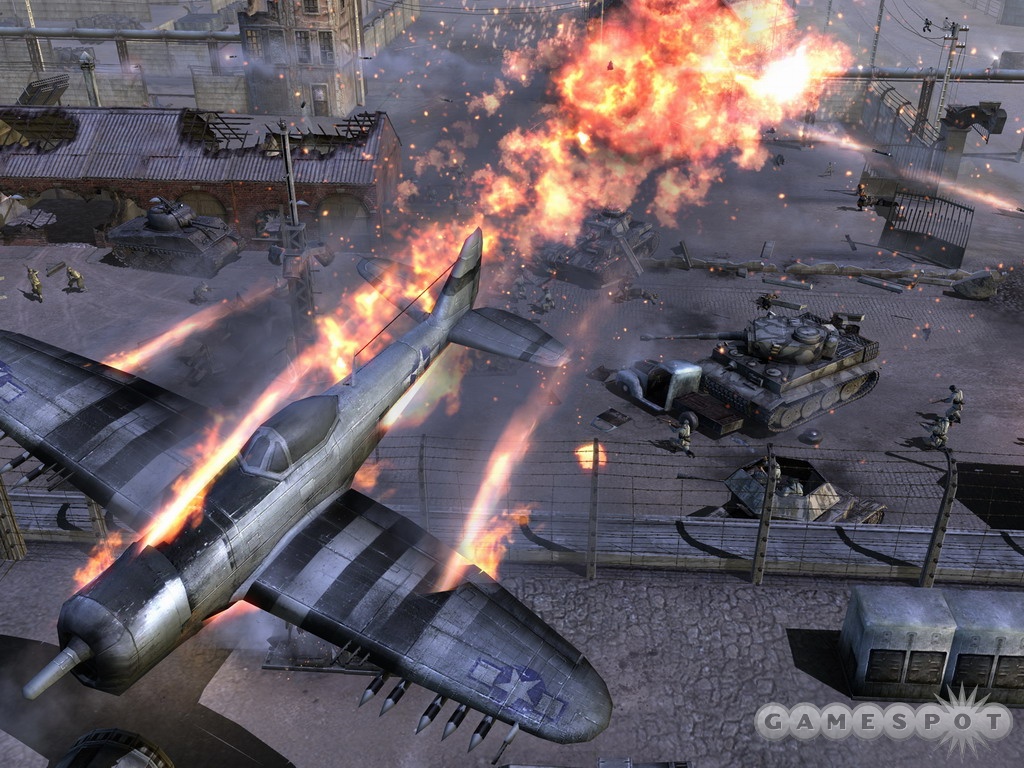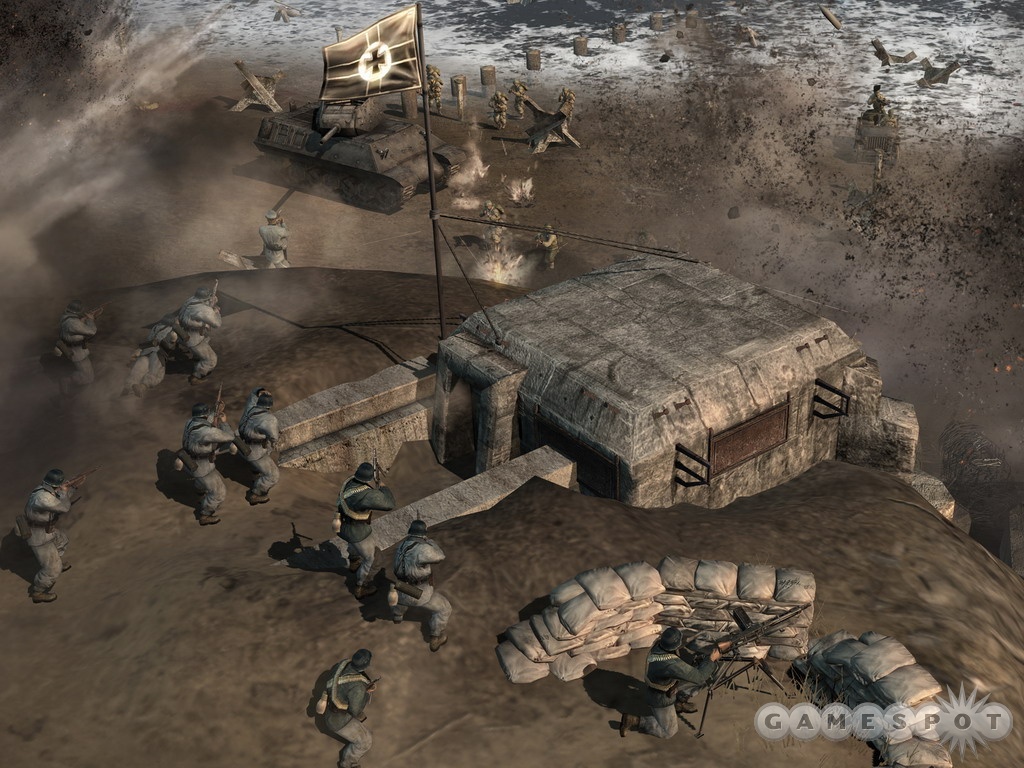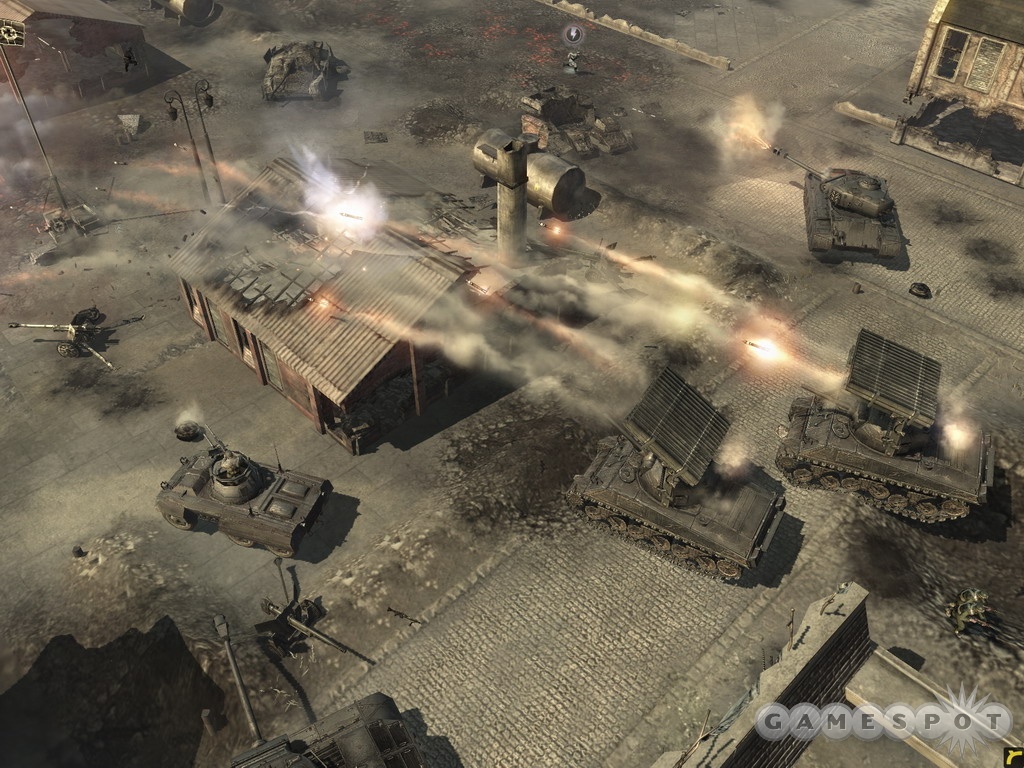Company of Heroes Designer Diary #7 - Final Thoughts
With Company of Heroes due out next week, senior designer Erin Daly looks back at the development of this cutting-edge World War II strategy game.
With Company of Heroes, the anticipated World War II real-time strategy game, due to arrive next week, the designers at Relic Entertainment can now look back at the long process of making the game. If you've played the
Putting it All Together
By Erin DalySenior Designer, Relic Entertainment
From the start, we wanted the single-player campaign in Company of Heroes to be something very special. We were bored with single-player real-time strategy games that played like minor variations on the skirmish game mode, with repetitive environments and the same enemy artificial intelligence from the skirmish game. Our goal was to deliver a highly engaging experience that was like playing an episode of Band of Brothers or one of the major battles in Saving Private Ryan. We wanted the environments to be highly detailed and unique, the mission objectives to be varied, and the enemy to play off the specifics of each unique setting. It would take us many months and countless hours of overtime to get there, but in the end it proved well worth the effort.

We started by defining the scope of the campaign. Enter Normandy, the first, crucial step in dismantling Hitler's Fortress Europe. Without this chunk of land in Northern France, the Western Front wasn't going anywhere. It was a natural beginning. It also had a climactic ending: the battle to close the Falaise Pocket. In this battle, the Allies surrounded the entire German 7th Army, squeezing it into a tiny pocket with only one escape route. In the end, more than 50,000 German troops surrendered and another 10,000 were killed. This battle marked the end of German resistance in Normandy and the beginning of the end of the war in Europe.
Next came the missions. Company of Heroes focuses on authentic battles. We wanted to deliver the most compelling and highly charged missions that the Allies undertook in this epic invasion: Securing the crossroads town of Carentan, capturing the port city of Cherbourg, and pushing the Allied advance through the deadly hedgerows before taking the ruined city of St. Lo. We pored over history books, memoirs, and war letters, learning everything we could about these storied battles. From that background we developed the mission objectives and structure, trying to stay true to the essence of the battle and capture the emotional intensity of the event.
With each mission came a different environment. To create these, our art team pulled out all the stops, delivering an amazing level of detail. The endless grassy fields and repetitive city streets we're used to seeing in most real-time strategy games are gone. Each location in Company of Heroes is a unique, handcrafted experience. You've never seen environments like these before. The design team worked closely with the artists to ensure each setting held a rich source of tactical choices. Garrison a civilian building to create a forward barracks on the battlefield. Use an upgraded Sherman tank to bulldoze a thick hedgerow and create a new attack route. There are countless different ways to tackle each mission.

We knew the enemy AI would play a huge role in delivering the memorable battles in Company of Heroes. To do this would require huge amounts of custom enemy behavior, tailor-made for the specific environment and mission objectives. Instead of generic enemy behavior that plays like a skirmish match, we made the Axis troops in the single-player campaign take their environment and individual tactical situations into account. Enemies will run to nearby buildings when under attack, or retreat to an Axis strong point when taking losses, then regroup and attack.
We also wanted to create enemy AI that reflected the style of combat employed by the Axis. The Wehrmacht was known for its vicious counterattacks, never giving an inch of ground without trying to take it right back. To model this in Company of Heroes, key towns or strategic locations that you capture in one mission sometimes have to be defended in the next. Shifting your strategic mindset from offense to defense requires taking advantage of the environment. The few buildings you left standing after the capture of the town now become key defensive points, providing valuable cover for machine-gun crews and snipers.
You have a wealth of tactical and strategic options available in every mission, but each presents a unique and challenging strategic problem. Whether it's how to take over a V2 rocket base with paratroopers or how to take down a squadron of deadly Panther tanks, there are always multiple routes to victory. Keeping your troops alive also plays an important role, as they gain veterancy through combat. Veteran squads from previous missions can be brought up to the front lines in the current mission (for a cost).

To bring all these elements together into a cohesive experience required cinematics. These sequences also helped set the tone and deliver the emotional power of this epic invasion. Each mission in Company of Heroes is delivered with a cinematic intensity not seen before in a real-time strategy game. Most of the scenes in the accompanying trailer to this diary are from the in-game cinematic sequences, which are rendered in real time by the game engine so as to keep you immersed in the action.
These sequences are peppered throughout the game, setting the stage for the missions and also showing important changes in the battle. For example, when a group of Panzer IV's roll onto the battlefield, a cinematic sequence makes sure you know about it so you can adjust your strategy accordingly. These cinematics also let us get up close and meet the individual soldiers of Able Company. It's through their eyes that we experience the story and get a glimpse into what it was like to be on the ground during this defining moment in history. The cinematics in Company of Heroes also tie directly into the gameplay. At the beginning of each mission, a quick briefing on the tactical map highlights the key objectives and tactical features of the mission. Between missions, your progress is shown on a large-scale map, where sometimes the fulcrum of the entire front line can rest on a single town.
It's a cliché to say it, but everything came together in the end. The single-player campaign in Company of Heroes is a highly immersive, engrossing single-player experience that is unlike any other single-player real-time strategy game you've played.
Got a news tip or want to contact us directly? Email news@gamespot.com
Join the conversation